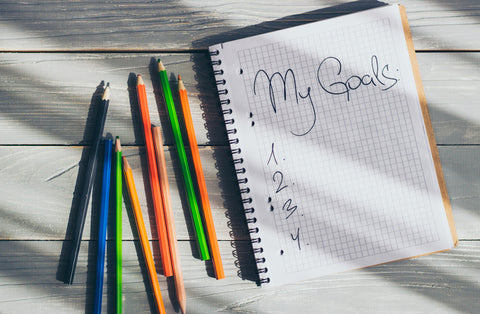Skill Building for Life
Blog · Aug 06, 2019

Teaching children how to set and achieve reachable goals is the greatest gift we can give to prepare them for success in life. When we are equipped with the ability to achieve what we set out to accomplish, suddenly anything seems possible. It is these possibilities that build hope for the future and a future worth working to reach. The ability to set and reach our goals can improve self-confidence and enhance academic performance.
For younger children, the most attainable goals are those that can be realistically completed in a week or at least significant progress can be made in a short period of time.
Examples of short term goals students can set to practice their skills include finishing homework for the weekend on Friday so that the rest of the weekend is free, reading a new book every month, or practicing a sport or musical instrument for at least 30 minutes per day.
As children develop and mature, their grasp of the concept of time and planning for the future increases and they can begin setting more complex goals that may take much more time and involve many more steps to accomplish. Regular practice in setting and reaching goals and reflecting on the outcome of their efforts will strengthen their confidence and ability to assimilate this process into their everyday lives. It is within this framework of positive expectations for the future, that we make better, healthier choices.
The most critical step in setting and reaching goals is to Name a goal that can be reached.
You can help students develop their action plans by instructing them to identify what needs to be done, how it will be done, and what tools or assistance is needed to make the goal a reality.
Reachable goals meet the following four criteria:
- Personal – Commitment to the goals we set is the strongest driver for success. The goals we set must matter to us. They must be our goals.
- Possible – The goals we set must be reachable. They must be possible to achieve with the resources, time, and access we have available. Is the goal realistic given your situation? Do I have the time to reach this goal?
- Positive – Goals should be positive things a student wants to achieve or improve. i.e. “I want to improve my spelling to an 85% on the test” rather than, “I don’t want to do badly on the spelling test.”
- Specific – A goal needs to be measurable. Without benchmarks or other measures of performance, how do we know when we have reached the goal? A goal must be set to be reached within a certain time. With benchmarks and a timeline, we have something specific to work towards.
Once the goal has been named and we are confident it is reachable, we can set out to complete the rest of the process. The next step is to picture yourself reaching the goal. Setting an image in our minds of our future success imprints the expectation that we can achieve what we set out to do. Coupled with a personal affirmation that we can indeed do what we set out to do instills an internal encouragement to do the work and keep at it even if the process becomes challenging.

From there we have to plan out how we will accomplish the goal we set. Practice one hour each day for four weeks? Ask for extra help or tutoring? Collect study resources?
Once the plan is in place, go for the goal, and when you have reached it, celebrate your success. The celebrating part is critical. The good feeling that comes with this kind of self-driven success is the foundation for future efforts to reach for the challenging and avoid doing things that could interfere with future success.
Guiding children in learning and mastering their goal setting skills presents excellent opportunities for educators to mentor and be a positive role-model. Encourage your students to practice setting goals and challenging themselves to try for the things they want from life. Remind them that reaching goals isn’t always easy and to not give up if they don’t succeed on the first or tenth attempt.
Goal setting and modeling positive behaviors for kids of all ages represent a fundamental aspect of Too Good programs.
Contact us online to learn more, or call us at (800) 750-0986.
